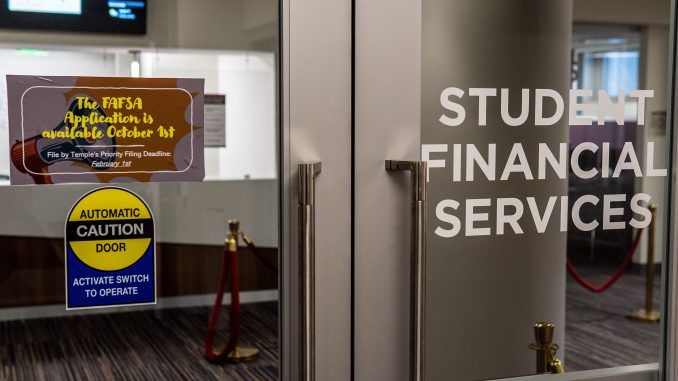
Temple University received $78 million in the third installment of the Higher Education Emergency Relief Fund in May, half of which the university is required to distribute to students to finance personal expenses like rent, transportation and tuition.
Temple is using the other half of the relief funding to cover losses from the pandemic, including purchasing personal equipment like plexiglass, providing COVID-19 vaccines and making up for the decline in housing revenue, said David Marino, interim university treasurer.
“What used to be a full dorm is now an empty dorm,” Marino said. “So they knew we still had a cost structure. They didn’t want us to terminate everyone in facilities and housing.”
As part of the March 2021 American Rescue Plan Act, HEERF III is the third round of federal COVID-19-related relief funding to help higher education institutions support students and sustain their operations amid the pandemic.
As of the Fall 2021 semester, Temple has received a total of $151 million throughout the three HEERF installments, of which $68 million has gone to students. Temple disbursed $14.7 million to students during the first two rounds of HEERF funding, which took place in the summer of 2020 and April 2021.
Of Temple’s HEERF III funding, the university disbursed $26.5 million to the 7,600 Pell Grant-eligible students enrolled in undergraduate programs this semester, with each student receiving a $3,500 grant, wrote Stephen Orbanek, a spokesperson for the university, in a university press release.
The university disbursed an additional $11 to $12 million to approximately 10,500 fall semester students who demonstrate financial need in the form of a $1,000 grant, Orbanek wrote.
“Overall, I just used it to survive the semester,” said Rosalee Banks, a junior criminal justice major. “It was almost a sort of, like a stipend.”
Banks used the funds to help cover the cost of her daily college expenses and her daily SEPTA commute to her classes.
“It’s what I live off this semester,” Banks said. “The money has really helped me just be able to get to my classes.”
The university emailed eligible students asking them to complete a survey about their financial needs and how the pandemic affected them, Orbanek wrote. The responses assisted the university in determining how much money to distribute to each student.
The university also disbursed roughly $280,000 of the funding in $1,000 to $3,000 grants to 142 students and nearly $1.1 million of the funding in the form of grants up to $5,000 to 227 students, Orbanek wrote.
“I received a lot of great feedback from the students that it was very helpful for them to pay their rents,” Marino said. “Maybe to get a plane ticket to go back home when they had to move out.”
Students were given an option of whether to receive their HEERF III payment in the form of a check or direct deposit, Marino said.
HEERF funds are not connected to the state or city a university is located in, Marino said. The university complied with an independent audit to ensure the funds were being used in accordance with federal guidelines, he added.
“For me it took the load off my rent stresses,” said Gayatri Campbell, a senior English major who received HEERF funds this fall. “I am always stressing about money so it was nice to have some given back to me.”


Be the first to comment